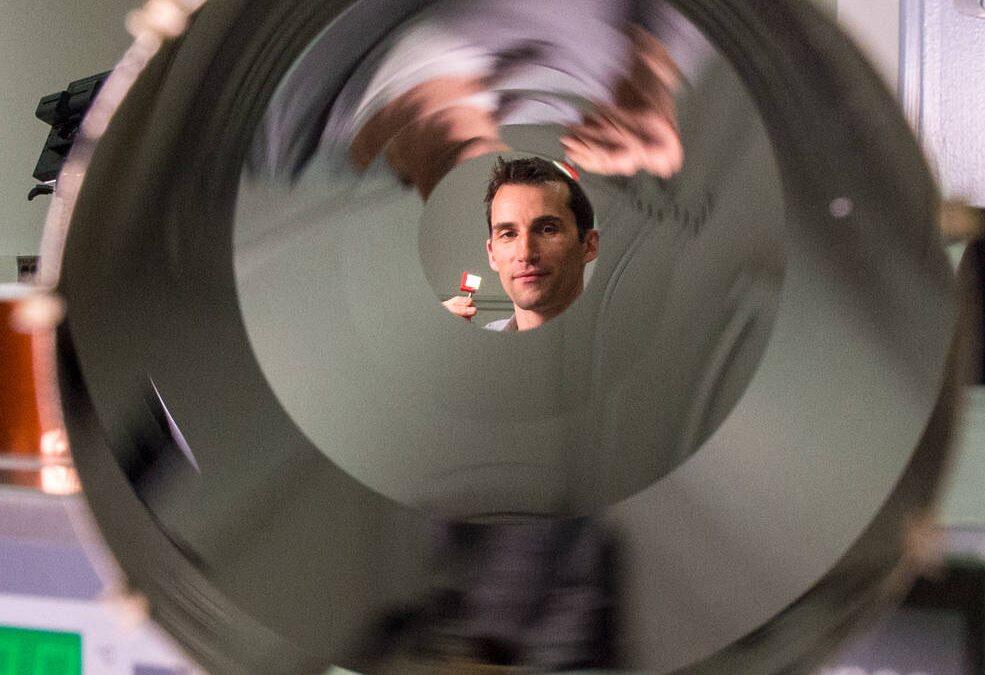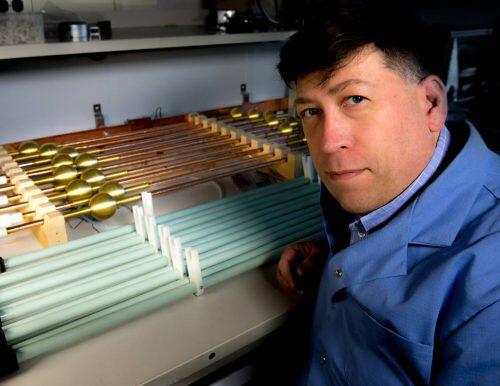With two new sounding-rocket missions funded by NASA’s Heliophysics Technology and Instrument Development for Science, or H-TIDeS, program, scientists at NASA’s Goddard Space Flight Center in Greenbelt, Maryland, plan to learn more about these little-understood processes. Both potentially influence space weather and the magnetosphere’s response to the onslaught of charged solar particles that can race across the solar system and slam into Earth’s magnetosphere, the magnetic bubble that shields it from hazardous solar storms.
Both missions trace their heritage to R&D-funded technologies and have flown before. However, when they launch, possibly in 2018, they will employ different measurement techniques and conduct their investigations using improved, more sensitive instruments.
FOXSI-3
During its 15-minute flight from White Sands Missile Range in New Mexico, the Focusing Optics X-ray Imager-3, or FOXSI-3, will search for tiny releases of energy in the active and quiet sun. Equipped with a hard X-ray imager/spectrometer, FOXSI will be able to directly observe faint events on the sun, including tiny energy releases commonly known as nanoflares. Principal Investigator Lindsay Glesener, of the University of Minnesota leads the FOXSI-3, effort.
“Hard X-rays are ideal probes for studying nanoflare release,” said Goddard solar scientist Steven Christe, who is one of the mission’s co-investigators. “Since nanoflares theoretically convert magnetic energy into kinetic and thermal energies, they are an obvious candidate for supplying the needed energy to heat the million-degree corona. The theory is that these small events happen all the time. We need to look for their signatures.”
Apart from their ability to potentially heat the corona, it is not completely known whether nanoflares are driven by the same mechanisms as larger solar flares. Large flares accelerate charged particles that speed across the solar system, sometimes resulting in severe space weather events that can adversely affect low-Earth-orbiting spacecraft and even Earth’s terrestrial power grid. Scientists know that nanoflares are much less intense and do not have similar strong space weather effects, but whether nanoflares are mini-versions of this process or are just small heating events is currently unknown. It is a question scientists want to answer.
Although previous FOXSI missions have demonstrated the feasibility and potential for directly measuring the release of hard X-rays in the corona, the new version will carry upgraded optics and detectors that are expected to give scientists a better view of these highly energetic events.
“With FOXSI-3, we’re trying to push the sensitivity as far as possible,” Christe said.
VISIONS-2
Also slated to launch in 2018 is VISIONS-2, short for Visualizing Ion Outflow via Neutral Atom Sensing-2, which is specifically designed to investigate the outflow of oxygen ions from Earth’s upper atmosphere and into the magnetosphere.
Cutting Edge Magazine – Doug Rowland
Unlike it predecessor — VISIONS-1 that observed the outflow at night from the polar auroral zones — this mission will observe the phenomenon during the day from Earth’s magnetic cusps — regions in the magnetic cocoon near Earth’s poles where the magnetic field lines dip down toward the ground. These regions are the strongest source of outflowing ions, said VISIONS-2 Principal Investigator Doug Rowland, a Goddard scientist.
With this information, scientists hope to better understand the physics that influence Earth’s magnetosphere. This is particularly important because this is where most space assets, including communications satellites, reside and such satellites are sensitive to severe space weather caused by the solar wind. Furthermore, the processes that heat and energize oxygen ions in the atmosphere are universal in nature.
“These oxygen ions come and go in episodic bursts,” Rowland said. “When they are present, which is not all the time, they have dramatic effects on near-Earth space. Among other things, they can affect the rate at which solar-wind energy is transferred to the magnetosphere, and the rate and details of how this stored energy is released to produce aurora,” the display of lights seen typically at the poles, he added.
In addition, a better understanding of the outflow could shed light on why Mars, which has a very weak magnetic field, is losing its atmosphere, while Venus, which has no magnetic field at all, remains enshrouded in a thick atmosphere.
VISIONS-2 will launch from Ny-Ålesund, Norway, carrying a payload of five different instruments. Goddard is providing the principal instrument, MILENA, which is short for Miniaturized Imager for Low-Energy Neutral Atoms. It traces its heritage to an instrument that flew on the U.S. Air Force-sponsored FASTSAT mission in 2011. Goddard also is providing the Fields and Thermal Plasma package, which consists of a double-probe electric field instrument. The Aerospace Corp. is providing the Rocket-borne Auroral Imager, the Energetic Ion Analyzer, and the Energetic Electron Analyzer.
“We don’t have to fly through the ion outflow. What we’ll be doing with VISIONS-2 is standing back and looking at the big picture,” Rowland said.
NASA Goddard Space Flight Center













